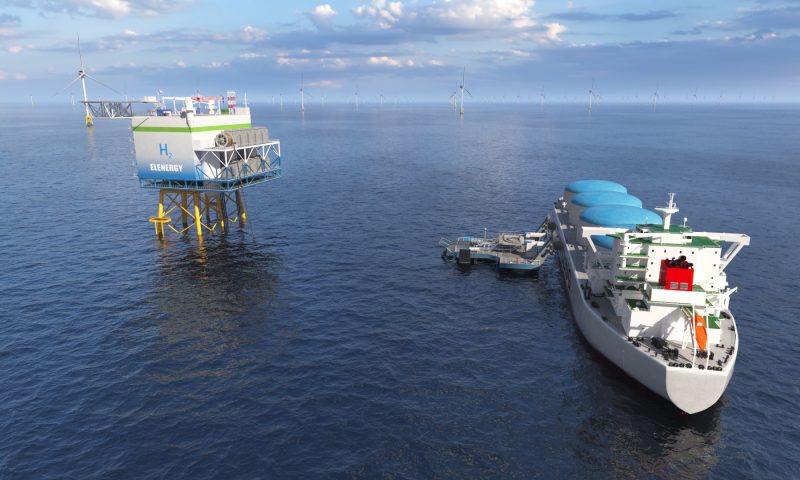
Elen-Energy builds a green hydrogen production base using offshore wind power to product 1.5GW
[Electric Power Reporter Park Yun-seok] Elenergy, which is promoting the development of a 1.5GW offshore wind farm, has started a project to produce green hydrogen with electricity produced through offshore wind power.
Elenergy recently signed a service contract with Jacobs for a business feasibility study of the green hydrogen production project in connection with the 1.5GW offshore wind power development project in the eastern part of Chuja Island.
According to this contract, Jacobs, a global engineering consulting company, plans to conduct green hydrogen market analysis through offshore wind power development, technology review, and conceptual design.
Elenergy is planning a green hydrogen project that produces and stores green hydrogen on an offshore platform equipped with water electrolysis facilities and transports it to land through a dedicated hydrogen carrier. Green hydrogen will be produced by electrolyzing seawater with an electric furnace produced in the offshore wind farm with a total capacity of 1.5GW, which is currently being promoted across three districts.
In particular, it is expected that it will be of great help to the establishment of the domestic hydrogen industry infrastructure by taking over the marine transportation of green hydrogen by Namseong Shipping, a domestic shipping company. Namseong Shipping is also a joint developer of the offshore wind power project.
Unlike blue hydrogen, which uses carbon dioxide capture and storage technology, green hydrogen does not emit any carbon, so major countries around the world are actively developing related technologies as a means of realizing carbon neutrality. In Korea, starting with Jeju, restrictions on renewable energy output are being implemented, so it is urgent to develop green hydrogen technology using surplus power from large-scale offshore wind power.
According to the hydrogen economy revitalization roadmap announced by the government in 2019, domestic hydrogen demand is expected to surge from 470,000 tons in 2022 to 1.94 million tons in 2030 and 5.26 million tons in 2040. Among the energy policy directions established by the previous government, the hydrogen industry is almost the only sector that continues the overall trend.
Meanwhile, before the development of offshore wind power, Elenergy completed the installation of three floating lidars near the candidate site to secure wind conditions data. Since the end of last year has begun to collect data sequentially, it is expected that individual power generation business license applications will be available from the first half of 2023 at the earliest.
However, it remains to be seen whether the power generation business license process can be smoothly carried out through the Ministry of Trade, Industry and Energy. According to Article 303 of the Jeju Special Act, a special case concerning electricity business, permission for power generation business for wind power business is designated by the Jeju governor. However, in the case of wind power projects exceeding 20MW, consultation with the Ministry of Industry is required.
One of the major issues related to the development of offshore wind power is that there are no clear maritime boundary regulations for each local government’s maritime space jurisdiction. Jeollanam-do and Jeju-do included Chuja-do in their respective marine space scopes when establishing maritime spatial management plans. In the end, if the two local governments have a dispute over the jurisdiction of the region, it can affect the development of the project.
The offshore wind power project, which is scheduled to be built with a total capacity of 1.5 GW in the three candidate sites, is considered one of the large-scale projects being promoted in Korea. Among the six Ulsan floating offshore wind power development projects that have already obtained a power generation business license and are in the midst of development, the individual installed capacity of 5 projects is around 1.5GW. The largest offshore wind farm in the world currently in operation is the UK’s Honshi 2 project with a scale of 1.32 GW.
In light of the global development trend in which wind turbines are rapidly increasing in size, it is expected that 15MW-class models will be installed for the propulsion offshore wind power plants.
Source: Electric Power (http://www.epj.co.kr)








